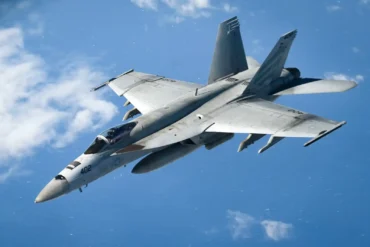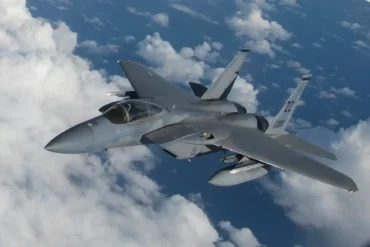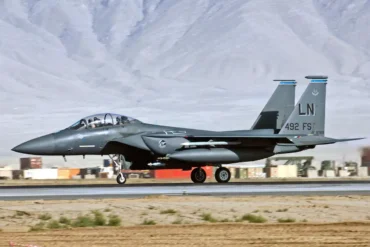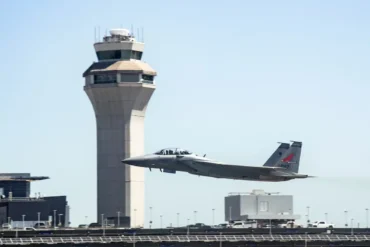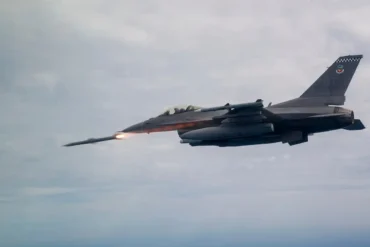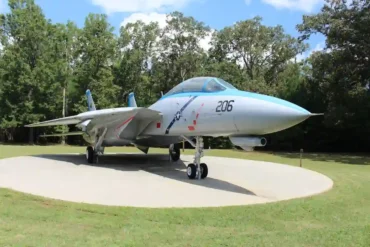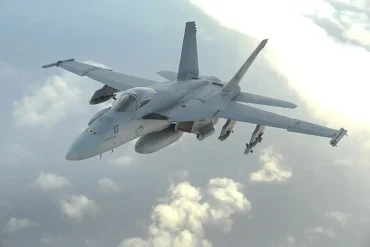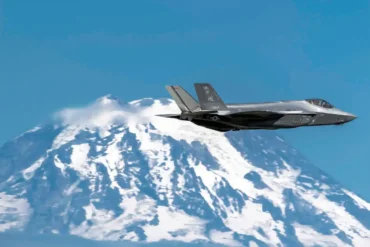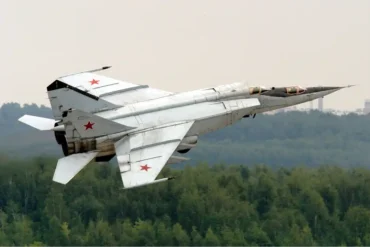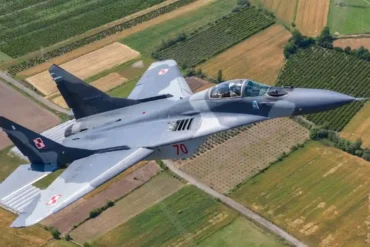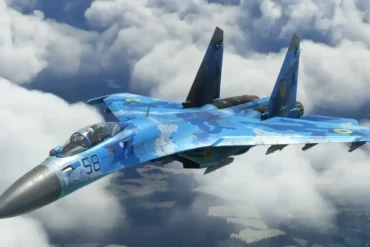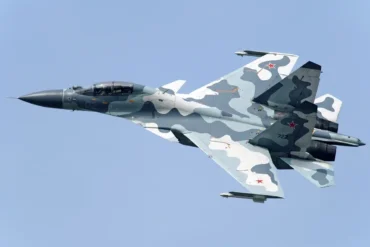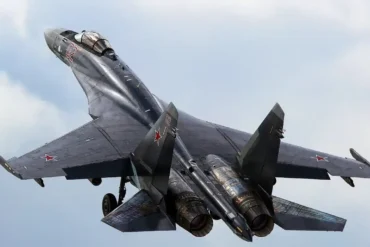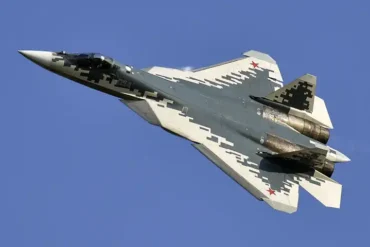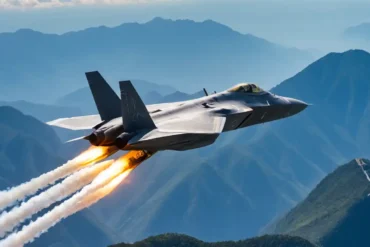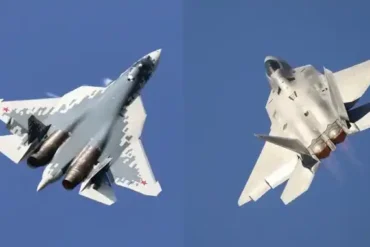The F-22 Raptor is widely regarded as one of the most advanced and powerful fighter jets ever built. With cutting-edge technology, unparalleled agility, and extreme speed, the F-22 redefines what modern air superiority means. In this article, we will explore the F-22 Raptor’s top speed, its performance in various conditions, and how it compares to other military aircraft.
F-22 Raptor Top Speed: Overview
The F-22 Raptor is capable of achieving impressive speeds. Its top speed, at high altitude, is an astounding Mach 2.25, which equates to approximately 1,500 mph (2,414 km/h). This speed is a critical aspect of the F-22’s superiority in the skies, enabling it to outrun or outpace most adversaries.
At sea level, the F-22’s maximum speed drops to Mach 1.21, which is about 921 mph (1,482 km/h), though it still remains faster than most modern combat aircraft at lower altitudes.
The supercruise ability of the F-22 further extends its reach. It can sustain speeds of Mach 1.76, or 1,162 mph (1,870 km/h), without the use of afterburners, making it highly fuel-efficient at high speeds.
What Does Mach 2.25 Mean for the F-22 Raptor?
Mach Speed Explained
To understand just how fast the F-22 Raptor is, it’s essential to first understand what Mach speed is. Mach is a unit of speed relative to the speed of sound. The speed of sound at sea level is approximately 1,225 km/h (761 mph), but this speed can change depending on altitude, temperature, and atmospheric pressure.
- Mach 1 is the speed of sound.
- Mach 2 is twice the speed of sound, and so on.
When we say the F-22 can reach Mach 2.25, it means it can travel at 2.25 times the speed of sound at high altitudes. This makes the aircraft incredibly fast and capable of outrunning many modern threats, including enemy fighters and missiles.
F-22 Raptor Performance Breakdown
The F-22 Raptor’s performance is a combination of its high-speed capabilities and exceptional maneuverability. Let’s break down some of the critical performance aspects that make this aircraft an unparalleled fighter in the skies.
Engine and Thrust
The F-22 is powered by two Pratt & Whitney F119-PW-100 turbofan engines, each capable of producing 26,000 lbf of thrust in dry conditions and up to 35,000 lbf with afterburners engaged. The advanced engines provide the F-22 with the ability to sustain supercruise—that is, flying at high speeds without the need to use afterburners for propulsion.
Supercruise and High-Speed Maneuverability
One of the most remarkable features of the F-22 is its supercruise capability, allowing it to fly at Mach 1.76 (1,162 mph or 1,870 km/h) for extended periods without using the fuel-guzzling afterburners. This provides the F-22 with a combination of speed, fuel efficiency, and extended operational range. At this speed, the aircraft is able to carry out its air superiority mission while conserving fuel, which is critical for long-range patrols and combat operations.
Moreover, the F-22’s thrust-to-weight ratio is 1.08 when unloaded, which means it can accelerate quickly and maintain a high level of agility even at its top speeds.
F-22 Raptor’s Operational Range and Fuel Efficiency
While top speed is an important factor, range and fuel efficiency are crucial for a modern fighter jet. The F-22 boasts a combat range of 460 nautical miles (850 km) in a clean configuration, or 595 nautical miles (1,102 km) when flying subsonically. This enables the F-22 to perform its mission with extended endurance and flexibility.
With two external fuel tanks, the F-22 can extend its ferry range to 1,740 nautical miles (3,220 km), making it capable of covering vast distances for extended missions. However, it is important to note that using external fuel tanks slightly affects the aircraft’s speed and maneuverability.
Comparison: F-22 Raptor vs Other Fighter Jets
The F-22 Raptor is often compared to other high-performance fighter jets, such as the F-35 Lightning II and the Su-57. Let’s take a closer look at how the F-22’s top speed compares to these competitors.
F-22 vs F-35 Lightning II
The F-35, while highly advanced in terms of stealth and versatility, does not quite match the F-22 in terms of raw speed. The F-35 can reach a top speed of around Mach 1.6 (1,200 mph or 1,930 km/h), which is impressive, but still slower than the F-22’s Mach 2.25. The F-22’s superior speed, combined with its supercruise capabilities, gives it a significant advantage in air-to-air combat.
F-22 vs Su-57
The Russian Su-57 is another advanced stealth fighter, but it too cannot match the top speed of the F-22. The Su-57 has a top speed of about Mach 2 (1,535 mph or 2,470 km/h), which is close to the F-22 but still falls short when considering the F-22’s superior Mach 2.25 top speed and Mach 1.76 supercruise ability.
Technological Advancements: The Role of Stealth and Avionics
While speed is a key feature of the F-22 Raptor, it is not the only attribute that defines its dominance. The aircraft’s stealth and advanced avionics systems make it a formidable adversary in any conflict.
Stealth Technology
The F-22’s stealth design ensures that it remains almost invisible to radar, making it one of the most difficult aircraft to detect. Its stealthy shape reduces the aircraft’s radar cross-section, and its radar-absorbing materials further decrease its visibility. These features give the F-22 a distinct advantage over enemy aircraft, allowing it to close in on targets without being detected.
Avionics and Sensor Systems
The F-22 is equipped with advanced sensor systems, including its AN/APG-77 radar, which provides a high level of situational awareness and target tracking. Its ability to detect and engage multiple targets simultaneously, combined with its advanced data fusion capabilities, makes the F-22 a highly effective platform for both offensive and defensive operations.
F-22 Raptor in Real-World Operations
Since its introduction, the F-22 Raptor has participated in various operations, showcasing its unmatched speed and operational efficiency. The aircraft has primarily been used for air superiority missions, as well as air interdiction and defensive counter-air missions.
The F-22’s top speed has allowed it to quickly engage threats, whether that be adversary aircraft or surface-to-air missile systems. Its speed enables the aircraft to gain air dominance and deliver precise strikes in the shortest amount of time.
Conclusion: Why Speed Matters for the F-22 Raptor
In summary, the F-22 Raptor stands as a pinnacle of modern air combat, with a top speed of Mach 2.25 (1,500 mph / 2,414 km/h), supercruise capabilities of Mach 1.76, and a range that ensures it can conduct long-duration missions effectively. While other fighter jets may rival the F-22 in specific areas, its combination of speed, stealth, and advanced avionics make it a force to be reckoned with in modern aerial warfare.
Whether operating at high altitudes or engaging in combat at lower speeds, the F-22’s top speed and overall performance are central to its reputation as one of the most advanced and formidable fighter jets in the world.


